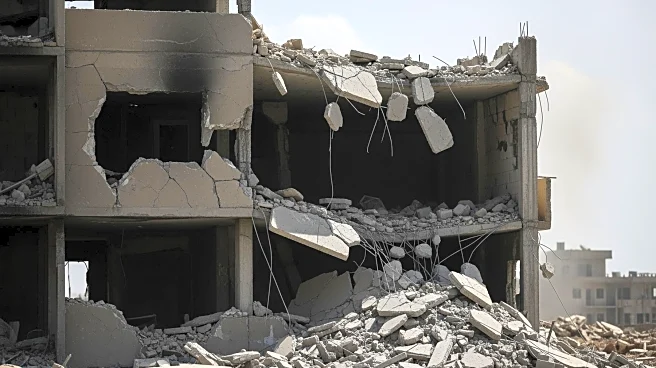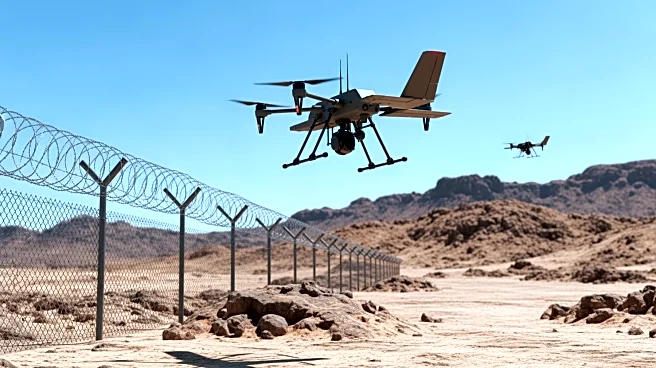What's Happening?
The Israeli Defense Forces (IDF) have reportedly destroyed over 1,500 buildings in Gaza since a ceasefire took effect. This action has occurred in IDF-controlled areas behind the Yellow Line, raising concerns
about potential violations of the ceasefire agreement brokered by President Trump between Israel and Hamas. The destruction has been documented by BBC Verify, which suggests that the scale of the demolition may constitute a breach of the ceasefire terms. The situation in Gaza remains tense, with ongoing debates about the implications of these actions for the region's stability.
Why It's Important?
The destruction of buildings in Gaza has significant implications for the humanitarian situation in the region. It exacerbates the challenges faced by civilians, including displacement and loss of infrastructure. The actions of the IDF could further strain relations between Israel and Palestine, potentially undermining efforts to achieve lasting peace. The international community may view these developments as a setback to diplomatic efforts aimed at resolving the conflict. Additionally, the situation could influence U.S. foreign policy decisions regarding support for Israel and engagement in Middle Eastern affairs.
What's Next?
The ongoing destruction in Gaza may lead to increased international scrutiny and calls for accountability. Human rights organizations and diplomatic entities might push for investigations into potential violations of the ceasefire agreement. The situation could also prompt renewed discussions about the role of international mediators in facilitating dialogue between Israel and Palestine. As tensions persist, there may be further diplomatic efforts to address the humanitarian needs of affected populations and to prevent escalation.
Beyond the Headlines
The destruction in Gaza highlights the complex dynamics of the Israeli-Palestinian conflict, including issues of sovereignty, territorial control, and the impact of military actions on civilian populations. It raises ethical questions about the conduct of military operations and the responsibilities of occupying forces. The situation also underscores the challenges of implementing ceasefire agreements in conflict zones, where trust and compliance are critical to achieving peace.













